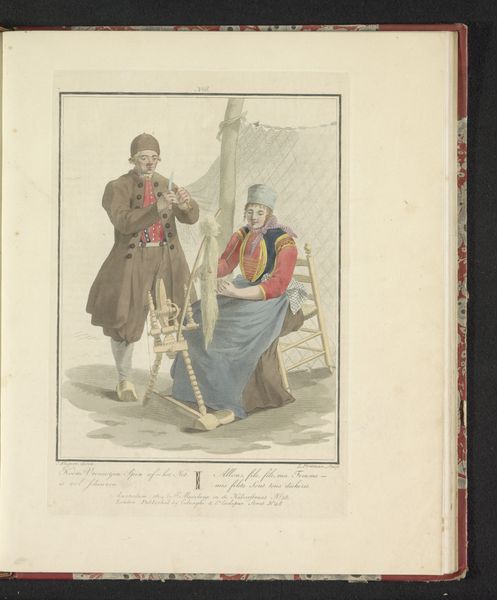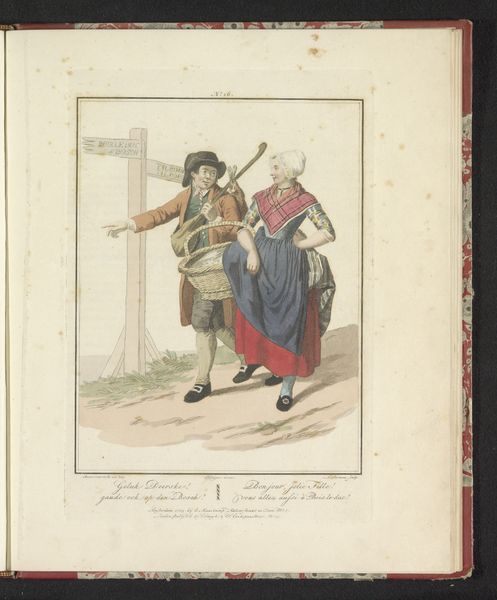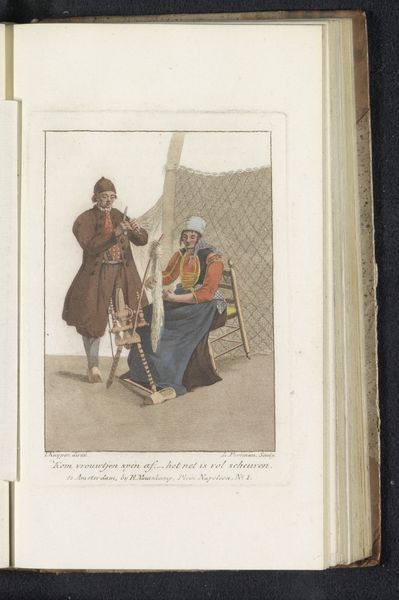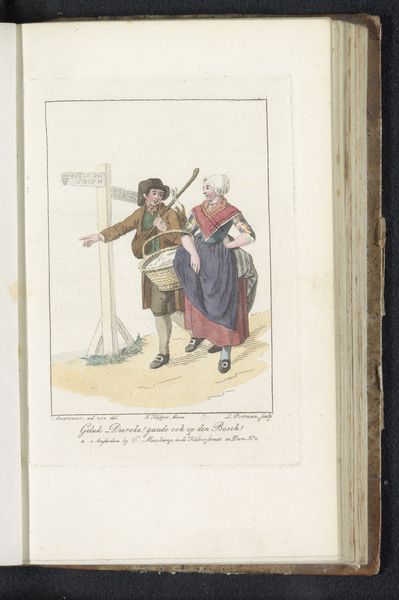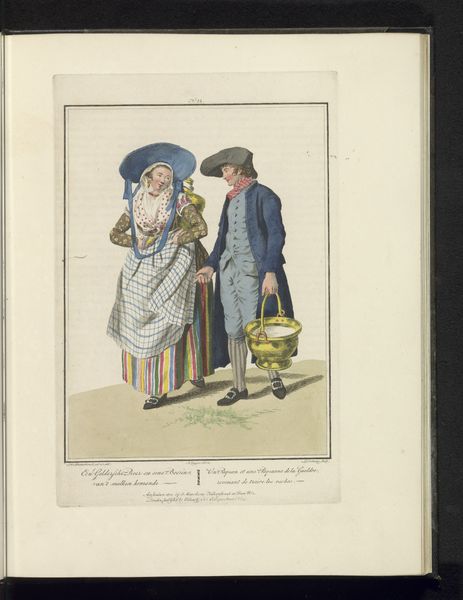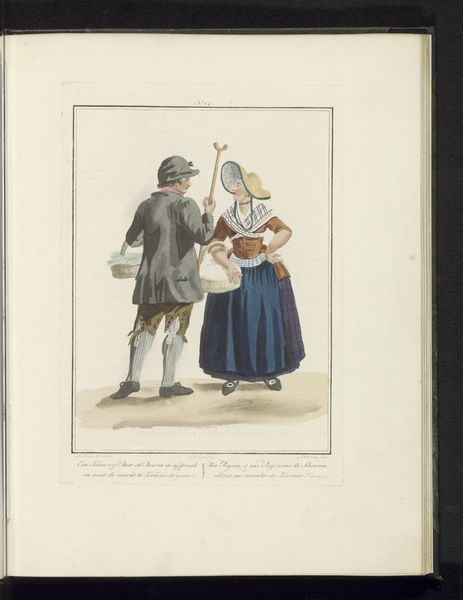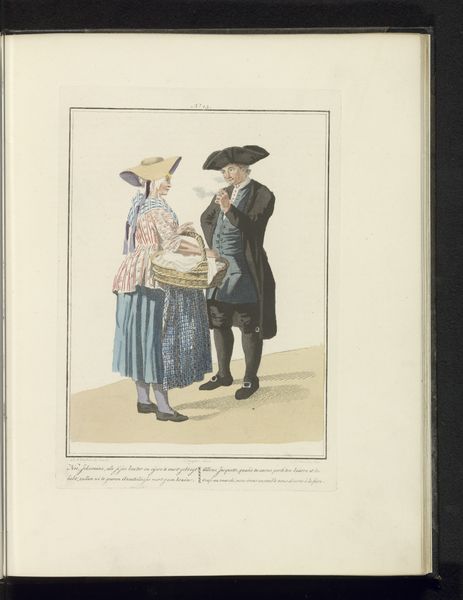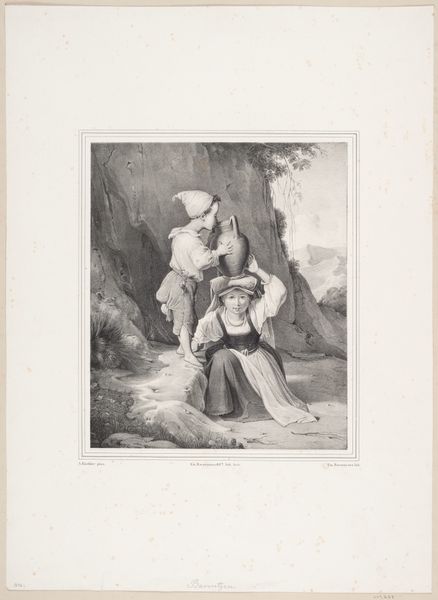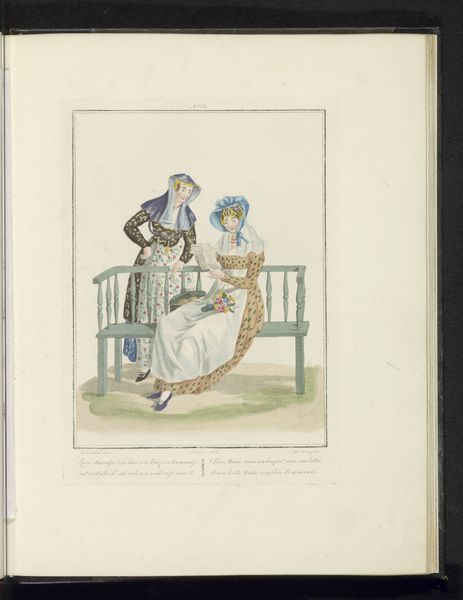
coloured-pencil
#
portrait
#
coloured-pencil
#
caricature
#
coloured pencil
#
folk-art
#
romanticism
#
costume
#
genre-painting
Dimensions: height 220 mm, width 156 mm
Copyright: Rijks Museum: Open Domain
Curator: Here we have Ludwig Gottlieb Portman's "Fisherman Couple from Schokland," a coloured pencil drawing, created sometime between 1804 and 1829. The couple, rendered in careful detail, seems suspended in time. Editor: There's an almost dreamlike quality to this, despite the grounded subject matter. The textures and colors are incredibly delicate; they lend it this serene atmosphere. Curator: Portman's approach strikes me as deeply ethnographic. We see meticulous attention paid to the traditional costumes, documenting their craft and the materiality of their garments in incredible detail. Consider the ways these clothes were made, distributed, and valued within their community. Editor: Yes, look at the man's knife and what appears to be a tool he is sharpening, standing over what appears to be a loom as the woman sits and spins; we gain such insight into the daily work, and even a little on the economy of the family by virtue of how the work is shared here. It highlights the labour involved, and also situates the subjects very specifically within the rural Dutch working class of the time. Curator: Exactly. And look at the context—Schokland, an island community, facing constant threat from the sea. These images weren’t just pretty pictures; they are historical records, each line filled with stories of cultural and environmental vulnerability. Think about the precarity of their existence and what this work is doing in an early representation. Editor: The net and ladder imply their close relationship to the tools needed to make a living off of their immediate environment. There's something quite timeless in these images; this couple is not framed by individual portraits, rather their proximity implies that their shared labor binds them together in this life, even though they don't physically touch one another. It brings a social, economic, and gendered dimension into focus that invites important discussion on labour practices as we see it here. Curator: Indeed. Portman invites us to not just admire the aesthetics, but to reflect on the social and material conditions that shape their lives. I believe this is vital if we aim to discuss this work and consider its full scope. Editor: Precisely. I see here both a romanticization of folk life and a record of it. A vital combination.
Comments
No comments
Be the first to comment and join the conversation on the ultimate creative platform.
